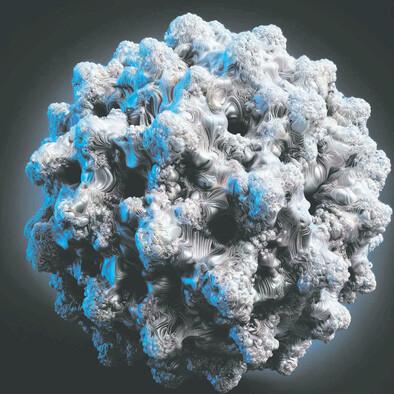Fractal Characterization of Simulated Metal Nanocatalysts in 3D
IF 11.1
Q1 MATERIALS SCIENCE, MULTIDISCIPLINARY
引用次数: 0
Abstract
The surface roughness of metal nanoparticles is known to be influential toward their properties, but the quantification of surface roughness is challenging. Given the recent availability of large-scale simulated data and tools for the computation of the box-counting dimension of simulated atomistic objects, researchers are now enabled to study the connections between the surface roughness of metal nanoparticles and their properties. Herein, the relationships between the fractal box-counting dimension of metal nanoparticle surfaces and structural features relevant to experimental and computational studies are investigated, providing actionable insights for the manufacturing of rough nanoparticles. This approach differs from conventional concepts of roughness, but introduces a possible indicator for their functionalities such as catalytic performance that was not previously accessible. It is found that, while it remains difficult to consistently correlate the dimension with the catalytic activity of surface facets, matching trends with their surface energy, thermodynamic stability, and number of bond vacancy are observed. This highlights the potential of fractal box-counting dimensions to rationalize catalytic activity trends among metal nanoparticles, and opens up opportunities for the design of nanocatalysts with better performance via surface engineering.

三维模拟金属纳米催化剂的分形表征
众所周知,金属纳米粒子的表面粗糙度对其特性有影响,但表面粗糙度的量化却具有挑战性。近年来,随着大规模模拟数据和模拟原子物体的计盒维度计算工具的出现,研究人员现在可以研究金属纳米粒子表面粗糙度与其特性之间的联系。本文研究了金属纳米粒子表面的分形计盒尺寸与实验和计算研究相关的结构特征之间的关系,为粗糙纳米粒子的制造提供了可行的见解。这种方法不同于传统的粗糙度概念,而是为其功能性(如催化性能)引入了一种可能的指标,这是以前无法获得的。研究发现,虽然仍然很难将尺寸与表面刻面的催化活性一致地联系起来,但却观察到了与其表面能、热力学稳定性和键空位数量相匹配的趋势。这凸显了分形盒计数维度在合理解释金属纳米颗粒催化活性趋势方面的潜力,并为通过表面工程设计性能更佳的纳米催化剂提供了机会。
本文章由计算机程序翻译,如有差异,请以英文原文为准。
求助全文
约1分钟内获得全文
求助全文
来源期刊
CiteScore
14.00
自引率
2.40%
发文量
0
期刊介绍:
Small Science is a premium multidisciplinary open access journal dedicated to publishing impactful research from all areas of nanoscience and nanotechnology. It features interdisciplinary original research and focused review articles on relevant topics. The journal covers design, characterization, mechanism, technology, and application of micro-/nanoscale structures and systems in various fields including physics, chemistry, materials science, engineering, environmental science, life science, biology, and medicine. It welcomes innovative interdisciplinary research and its readership includes professionals from academia and industry in fields such as chemistry, physics, materials science, biology, engineering, and environmental and analytical science. Small Science is indexed and abstracted in CAS, DOAJ, Clarivate Analytics, ProQuest Central, Publicly Available Content Database, Science Database, SCOPUS, and Web of Science.

 求助内容:
求助内容: 应助结果提醒方式:
应助结果提醒方式:


